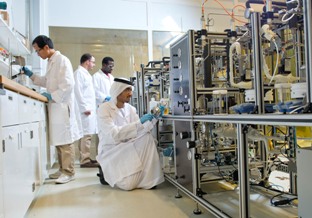Findings from a study conducted by Masdar Institute of Science and Technology have revealed that the carbon capture and utilisation technology developed by UAE-based ENGSL Minerals DMCC can capture up to 1.3mn tonnes of carbon dioxide (CO2) annually
This amounts to 85 per cent of total CO2 emitted by a typical UAE combined-cycle natural gas-fired power plant, at much lesser cost.
ENGSL chairman Badri Ghais said, ?This is an important technology with a very good potential for industrial-scale deployment in the UAE.?
Masdar?s team?s findings reveal that the capital costs of ENGSL?s technology could be up to 35 per cent lower compared to mainstream carbon capture technologies, which uses aqueous amine solutions in an energy-intensive carbon capture process, while overall energy/electricity demand could be up to 65 per cent lower.
ENGSL?s CCU technology has a significantly smaller energy requirement than conventional carbon capture technologies because of its capture process, which converts the CO2 directly into a solid material without the need to compress the captured CO2. CO2 compression, the company believes, accounts for roughly 35 per cent of the energy cost of a typical aqueous amine-based carbon capture system.
Masdar said that if implemented at a large-scale, ENGSL?s patented CCU technology ? which mixes sodium hydroxide with CO2 from the flue gas to create a valuable chemical called soda ash ? provides a very good opportunity to lower the UAE?s greenhouse gas emissions while increasing its revenue stream from soda ash exports.
During the next phase of the research collaboration, ENGSL plans to begin testing its patented technology on a larger scale, while Masdar Institute researchers are to begin experimentally examining other technological options, such as the use of fly ash, to improve the CO2 capture process.






